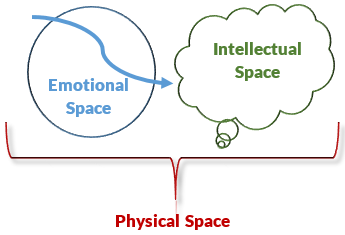Engagement Illustrated: Building and Managing Spaces

One of the jobs of an effective facilitator is to build spaces where creative dialogue can take place, and then hold that space open while people are there, so that the group can be productive together.
In this context, the term space can refer to physical, emotional and intellectual spaces. It is imperative to know the significance and interrelatedness of each in the facilitation setting.
Physical Space – refers to the engagement setting (both in person and online). A facilitator must thoughtfully consider, create and manage an appropriate space for participants in order to reach engagement objectives. This includes everything from whether the location is convenient, familiar and comfortable for participants, to how the tables and chairs are arranged and their effectiveness with techniques that are being used.
Emotional Space – the emotional space is the combination of emotions present in the meeting. It is essential for people to pass through the emotional space and be comfortable at an emotive level in order to participate in rational conversation. The facilitator must be aware of the comfort level in the room, and individually, and manage this emotional space using techniques that directly address and acknowledge any discomfort thus allowing participants to move through to the intellectual space.
Intellectual Space – Participants arrive in the intellectual space when common values have been identified, participants understand and accept the information they have been provided, and innovative problem-solving and agreement occur.



